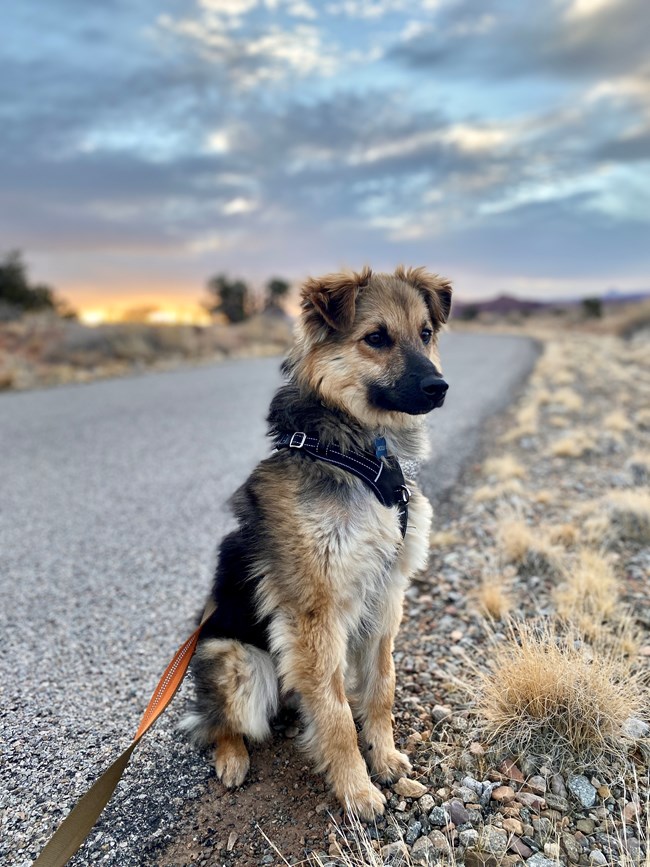
Krystina Carpenter Pets and owners have a special bond, but a national park is not always the best place for pets. Canyonlands National Park is a designated natural area, and its purpose is to preserve and protect the park's natural environment, cultural resources, wildlife, and scenic beauty. Pets are not allowed:
Where Can I Take my Pet?Leashed pets may accompany you in the following areas:
Where Can I Take my Pet? Continued:Pets may be transported inside vehicles driving the Shafer Trail to Potash Road at Island in the Sky. When the road to Beef Basin via Cathedral Butte is closed by snow/mud, persons with pets are allowed to cross the Needles district via the Elephant Hill-Devil’s Lane/Bobby’s Hole roads. Pets must be on a leash at all times when not in the vehicle, and must remain on the designated road surface only. Any pet excrement deposited on the ground must be collected and removed from the park. Pet Regulations
Pet SafetyTemperatures in Canyonlands regularly exceed 100°F. Extreme temperatures mean pets are susceptible to heat related illness or injury. Look for signs of upset stomach, vomiting, diarrhea, heavy panting, or disorientation and confusion. Rest in the shade, give pets cool water or ice cubes, cool them with a wet towel or with water, and seek medical attention if necessary. Avoid walking pets during the hottest parts of the day. When walking leashed pets in designated frontcountry areas, keep in mind that pavement can get dangerously hot. Try this test. Place your hand on the pavement for 7-10 seconds. If it is too hot for you, it is too hot for your dog's paws.
Why Can't I Have my Dog on Trails?
Service Animals and Emotional Support AnimalsService animals that have been individually trained to perform specific task(s) for the benefit of an individual with a disability are allowed in the park. The tasks performed by the animal must be directly related to the person’s disability. Therapy, companion, or comfort animals are not service animals under the Americans with Disabilities Act and may not access visitor centers, trails or other non-motorized areas. Owners of service dogs or horses must comply with pet waste and restraint regulations, unless restraint specifically interferes with the task the animal is trained to perform. Pet owners violating park regulations may be cited, fined, and/or issued a mandatory appearance before the United States Magistrate Court. Pet Friendly Alternatives Outside of Canyonlands National ParkIf you'd like to hike on trails with your pets, there are many options outside Canyonlands National Park, including:
| ||||||||||||||||||||||||||||||
Last updated: July 5, 2025
